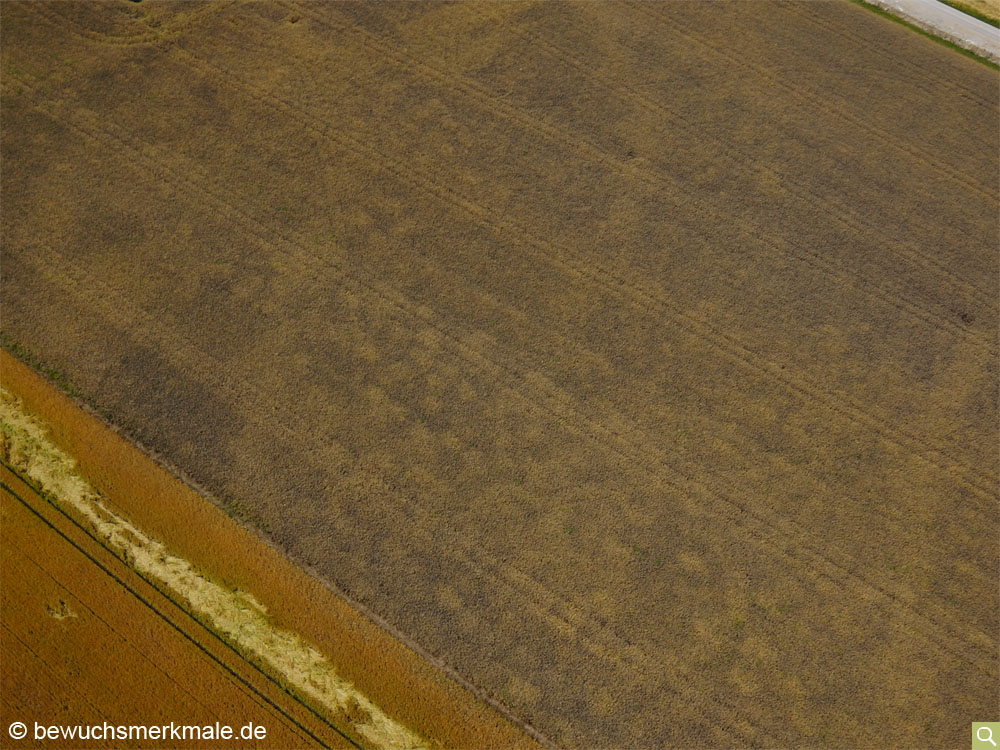Positive crop marks of an early medieval row cemetery in mature oilseed rape
This example shows that rape can also contribute to the rediscovery of archaeological monuments: Due to a conspicuous structure in a narrow grain field on a satellite image from the dry summer of 2013, a previously unknown early medieval row grave field with approx. 400 burials was suspected. To test the suspicion, this field was flown over with a multicopter in the summer of 2014. Although the field was cultivated with winter cereals, the cereals had matured to such an extent at the time of the flight that no crop marks were visible. During the routine survey of the neighbouring areas, patchy shading was noticed on the adjacent field to the north, which was cultivated with rape at the time of the aerial survey (mid-July). The cause turned out to be slight differences in the brown colouring of the seed pods of the mature rape, which revealed further burrows as positive crop marks. Based on the photographs taken, the previously unknown northern part of the cemetery was now documented with about 400 further graves [1].

[1] Krause/Later 2015
